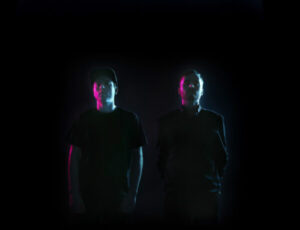Coheed and Cambria‘s latest album, The Afterman: Descension, part two of a double album that was recorded as one early last year, has now been released to listeners less than four months after the first part, Ascension, dropped in October 2012.
The Afterman: Descension tells the story of Sirius Amory’s return to his home planet after being adrift in space for almost one and a half years, and discovering the truth about the afterlife. Despite his scientific accomplishments, life back home after so long coupled with the weight of his discoveries, devastates Sirius.
The story of The Afterman is a prequel to the main Amory Wars narrative told in the first five Coheed and Cambria albums, in which Sirius’ past discoveries figure into the story prominently.
Descension is musically very similar to its predecessor, refining the best parts of Coheed and Cambria’s varied sonic palette while generally keeping the songs shorter and more radio-friendly than most previous albums.
Year of the Black Rainbow laid the groundwork for a thicker, harder sound that Descension continues to build upon, featuring straight-ahead chuggers like “Gravity’s Union”, while still remaining rhythmically interesting with songs like “Sentry the Defiant”.
The album plays a bit of a balancing act between several styles, and sometimes the less ambitious tonal shifts don’t quite live up to the rest of the album. I found the first single “Dark Side of Me” to be a mostly boring attempt at a radio-ready hard rock song that just wasn’t a very exciting composition.
However, like Ascension, Descension features some of the band’s best hooks in a long time, and most of them happen when the music gets more experimental. “Pretelethal”, the opening track, uses a ukulele to give the album possibly its most satisfying crescendo, leading right into “Sentry the Defiant” and one of the most powerful tracks on the entire double album.
“Number City” is a ska influenced dance tune that uses unusual guitar tones and a rhythm that pushes forward so hard it almost falls over itself, but is one of the most complex songs on the album. It may be about a bloody medical emergency, but Coheed and Cambria often get you dancing to the weirdest things.
The story of The Afterman is not only much simpler than that of The Amory Wars, it is also more upfront on the actual disc. As it was the last time around, Descension spends much of its time between songs playing out dialogue between Sirius and his spaceship computer the All-Mother.
Clocking in at under 45 minutes of music, The Afterman: Descension joins its companion album in feeling a bit stunted. Its short length is maybe partly explained by most songs being about four or five minutes, and nothing ever going quite as epic as in some previous albums. Gone are the multi-part suites and prog-rock influenced mid-sections of some older songs, which causes some of the once operatic sense of scale to be lost, but in its placed are songs that are tighter and catchier, while still feeling like Coheed and Cambria.
The Afterman is such a dense two albums of content – released only a few months apart, and telling a whole story arc in a tiny fraction of the time it took the band to tell their last one – that the release of The Afterman: Descension once again leaves listeners wondering what’s coming next.
Check out the video for “Dark Side of Me”:
[youtube]http://www.youtube.com/watch?v=fl1Dubqke28[/youtube]









